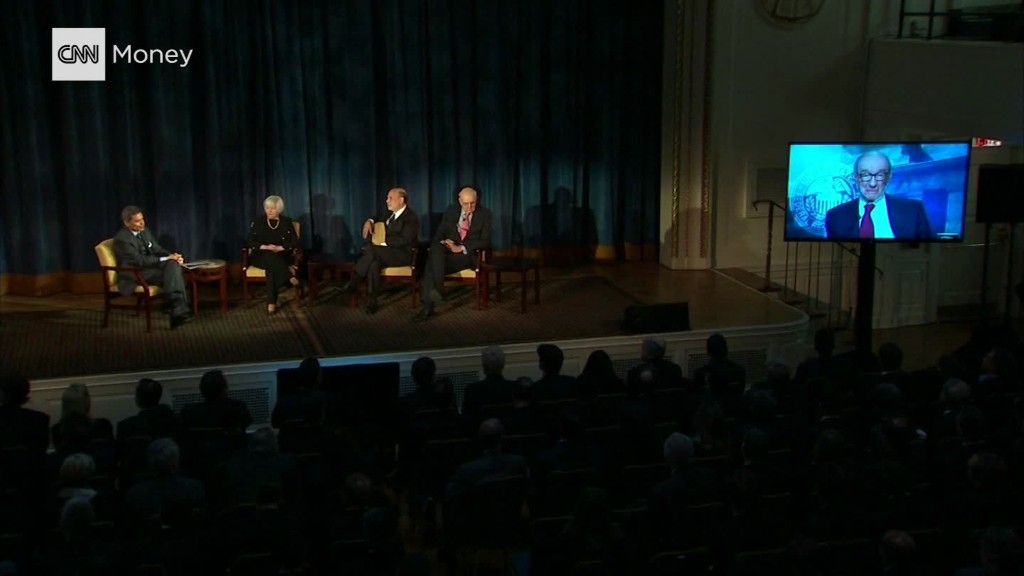
Psst. Have you heard the news? The bond market is a bubble that's about to burst!
Just like it was in 2009. And 2010. And 2011, 2012, 2013, 2014 and 2015.
So far, these predictions have been the Wall Street equivalent of the boy crying wolf. (Or maybe bear in this case?)
Investors scooped up Treasuries hand over fist on Friday, following the surprisingly weak jobs report, sending bond rates plunging. Bond yields go down when the price goes up.
The yield on the U.S. 10-Year Treasury is currently hovering around 1.7% -- a level that is still extremely low by historical standards.
That's helped fuel a rebound in the housing market -- as mortgage rates track longer-term bonds.
But low rates have punished savers for years. Low interest rates discourage people from putting money into a bank account since they receive very little interest on their deposits.
Related: Job creation weak, even as unemployment rate falls to lowest since 2007
So what's next? Is this the time when bond rates are finally going to surge higher?
It doesn't look that way just yet.
Bond yields have continued to remain low even though the Federal Reserve has already raised interest rates once (back in December) and has strongly suggested that more rate hikes could be coming before the end of the year.
It appears that many investors don't believe that Fed chair Janet Yellen will actually pull the trigger just yet though. In addition to the lackluster jobs report, there are concerns about the health of the rest of the global economy to consider as well.
Brian Battle, director of trading with Performance Trust Capital Partners in Chicago, said the upcoming vote by the United Kingdom about whether or not to stay in the European Union -- aka the Brexit vote -- may also keep the Fed on the sidelines.
Battle does think the Fed may raise rates at its July meeting though -- but that will likely be the only rate hike this year since the Fed may not want to do something right in the heat of the presidential election campaign.
"The Fed tries to be apolitical. And given the pace that Yellen keeps, we may get a July increase and that would be it," Battle said.
Related: Will the Fed raise rates before the elections
John Canavan, an analyst with Stone & McCarthy Research Associates, a Princeton-based fixed income and economic research firm, added that U.S. rates are already relatively high when you compare them to Germany, Japan and the United Kingdom.
"When you look more globally, U.S. yields are still significantly higher than elsewhere. There is still some good value in Treasury bonds," he said, adding that he does not think the bond market is in a bubble since inflation remains low as well.
It's also worth noting that bond rates haven't spiked higher even as many foreign investors have been dumping U.S. debt.
The most recent figures from the Treasury Department showed that China and Brazil -- the largest and fifth-largest international holders of U.S. debt -- were net sellers of U.S. bonds.
Related: Janet Yellen says rate hike is 'appropriate' soon
But someone is happily buying all those bonds that are being sold. If that weren't the case, rates would likely be higher than where they are now.
"It is clear that there is still broad demand for Treasury bonds," Canavan said. "Others are picking up the slack. So it's not a major concern. China's selling is not going to do any major damage to the bond market."
Battle agreed. He said even if the Fed raises rates in the next two months, they will still be extremely low by historical standards. He added that the Fed isn't necessarily tightening its monetary policy, it's just making it "less extraordinarily accommodative."
There's also a big difference between now and the 2008 election -- when Ben Bernanke's Fed was forced to act in the middle of a crisis even though the election was just months away.
"Eight years ago was much different," Battle said. "Now we may have slow growth and it feels crummy but then people felt it may be the end of the world. We know more rate increases are coming. We just don't know the pace."
In other words, bond yields may not head much lower than where they are now. But they probably aren't going to shoot dramatically higher either. So it still looks like the bond bubble isn't popping just yet.
"The overarching global trend is one of not enough growth and below target inflation," said Robert Tipp, chief investment strategist at Prudential Fixed Income. "It is worse outside of the U.S. than it is in the U.S, but it's true here as well."





